Santa Claus visits Mid North, but drought-struck SA farmers prepare for looming bank reviews
Some farmers have called it the most challenging year of their lives, and with the new year fast approaching, there is another challenge looming over the horizon.
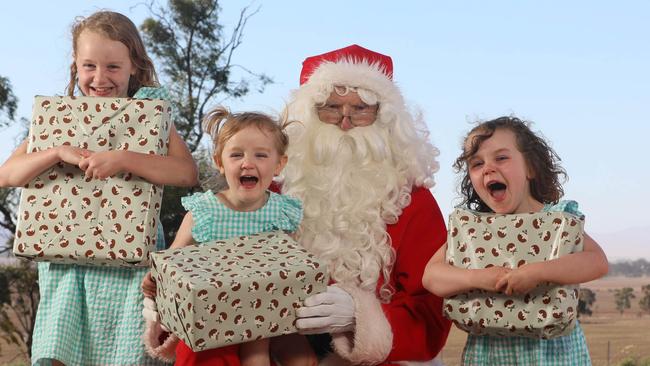
SA News
Don't miss out on the headlines from SA News. Followed categories will be added to My News.
As his three young girls unwrap early presents from Santa Claus, all Andrew Walker wants for Christmas is a change of fortunes.
Last year, the 45-year-old grain farmer from Booleroo Centre was carting four trailer-loads of wheat every day for six weeks, mostly to Port Pirie and nearby Crystal Brook.
This year that came down to four trailers – in total
– as minimal rainfall led to South Australia’s lowest-yielding grain season in 15 years.
“There’s families worse than us who didn’t harvest anything,” he said.
“If I put together everything I made for the year, I would have scratched up about $50,000.
“The farm insurance alone is $42,000, and then there’s diesel, seeds, fuel, council rates, all of that … it really is devastating.”
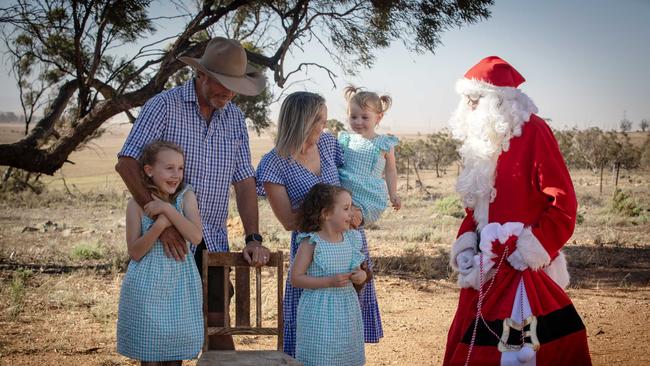
Already in the hole for hundreds of thousands, planting crops that came to nothing, the next moment of truth for Mr Walker and hundreds of others will be in the new year, when lenders review their financial arrangements with producers.
“The big thing is to buy a very nice bottle of wine for your bank manager,” he said.
“For us, the important thing is the bank lending the money … if they won’t increase your overdraft, you’re pretty well stuffed because you can’t plant anything.”
Talks are under way between Grain Producers SA and major banks about financial relief, but the industry group’s chief executive Brad Perry acknowledged there was “anxiety” this holiday season about looming bank visits.
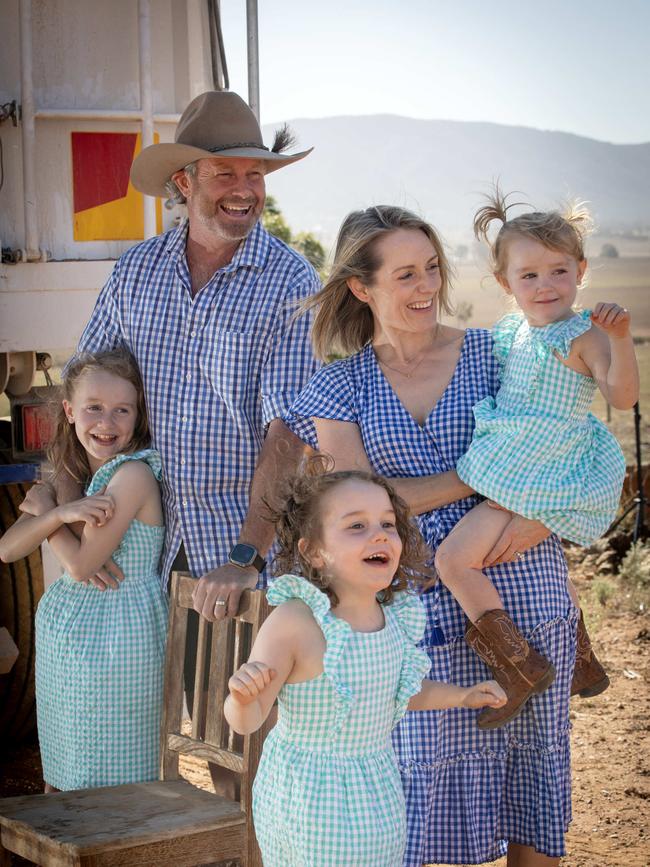
“These farmers all have a great track record and have been able to service their loans, and just because they’ve had one or two bad seasons doesn’t change that,” he said.
A bad season it was: crop yields fell from a five-year average of eight million tonnes to 5.3 million, punching a $1bn hole in the state economy.
Mr Perry said more SA farmers were seeking low-interest federal government loans to carry them over the bump, while the Malinauskas government has pitched in an $18m relief package.
As part of the package, $5m has been put aside for farmers to kickstart droughtproofing projects, with rebates of up to 75 per cent, while the rest is for business counselling, mental health support and transporting emergency livestock feed.
But Mr Walker said he was unlikely to invest in new infrastructure – or anything besides keeping the lights on.
“To get access to that (grant), you have to spend money, and for us we’re in a real budget-tightening situation … so it’s probably not going to help people who are really struggling, because they’re trying to avoid extra spending,” he said.
Primary Industries Minister Clare Scriven said the support package was “designed with direct feedback” from the sector, and last week chaired a forum with farmers’ associations and key lenders.
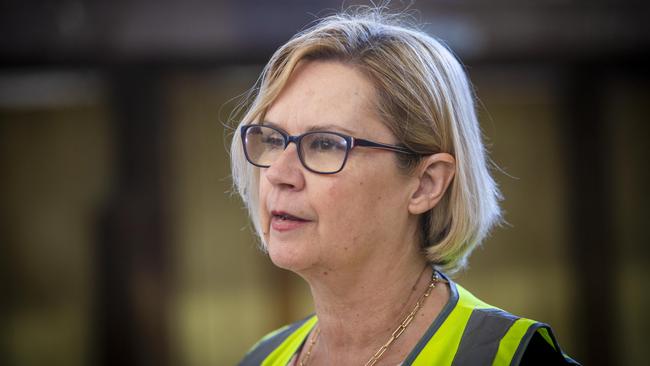
The parties agreed that farmers should be “supported through challenging times” and that “more can be done with proactive communication” across the board to ensure key information is shared widely, according to Ms Scriven.
“I also met with mayors and CEOs of regional councils … (and) suggested that farmers would benefit from streamlined hardship provision processes and encouraged councils to provide a simpler process for producers,” she said.
Flagging crop yields have also hurt mixed farmers such as Tom Kuerschner, 40, of Black Rock, whose family settled the area 150 years ago.
Instead of feeding livestock from his own grain fields, he and some others shelled out in the region of $100,000 to have feed trucked in.
“It has been worse than this, so you have to expect droughts, and you have to manage that because it’s out of your control,” he said.
“Increasing costs are more of a problem … it’s chemical, fuel, machinery, everything you use for business. In the last 15 years, the price of a Land Cruiser has gone from 50k to 100k, but no one’s profitability has increased.
“A lot of people are also removed from where their food comes from … it doesn’t matter how appreciative or not the end consumer is, if they’re still buying (meat and produce) from the big supermarkets, it doesn’t matter that much to the farmer because the middle man still gets a cut.”
He said the best thing someone could do for a farmer at Christmas was to buy Australian products, and shop at smaller grocers and markets which give the farm a better price.
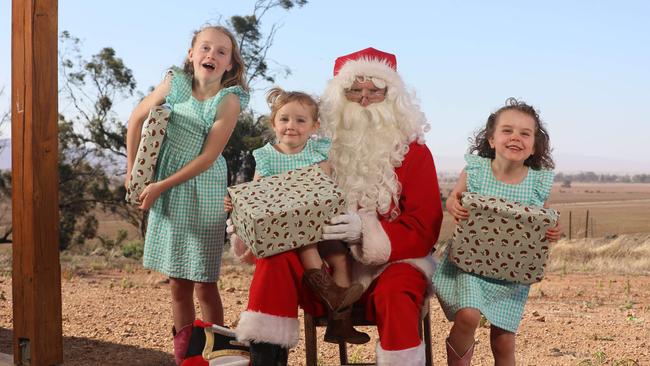
Shadow Primary Industries Minister Nicola Centofanti toured farms in the Mid North and Adelaide Plains earlier this month, alongside Opposition Leader Vincent Tarzia, and said producers were after an immediate cashflow lifeline. This could include low-interest loans, subsidies and rate relief, Ms Centofanti said.
“The government needs to consider these practical measures to assist farmers facing little or no income this season, and outline further stages of support to farmers over the coming months,” she said.
There is however a spot of cheer making its way along the Mid North, with a big white beard and four-wheel drive.
With his photographer daughter Kathy, Port Pirie local Ken Gould has been dressing up as Father Christmas for photos at Carn Brae function centre – all for a very simple reason.
“It’s a hard time, but it’s good to see the kids laugh, and tell jokes, and just make them smile,” he said.
More Coverage
Originally published as Santa Claus visits Mid North, but drought-struck SA farmers prepare for looming bank reviews




